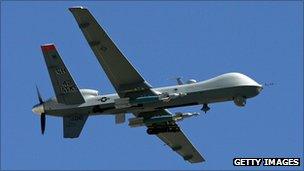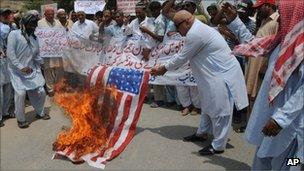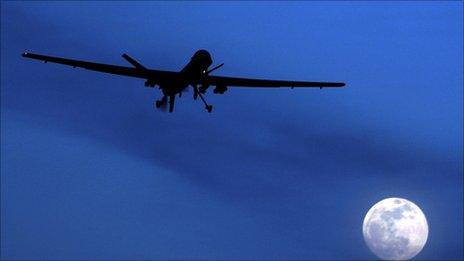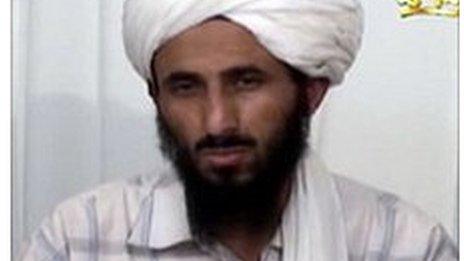US uses drones to target al-Qaeda in the Horn of Africa
- Published

The Reaper is a hunter killer drone which can fly twice as high and fast as the Predator
Quietly, with as little fanfare as possible, the US is trying to confront the twin challenges of terrorism and piracy in and around the Horn of Africa.
Amongst other means, the Americans are increasing using Unmanned Aerial Vehicles (UAVs), known as drones.
It is a controversial policy - the CIA is most worried by Somalia and Yemen, so it is no coincidence they are coming under the most surveillance from the air.
Those nations are also experiencing a rising number of unpopular missile strikes by armed MQ-9 Reaper drones, successor to the earlier Predators.
Crippling al-Qaeda
Counter-terrorism officials say that in failed or failing states, the drones are a precision-guided weapon to target al-Qaeda operatives, where the host country will not allow the US to put forces on the ground.
They point to Pakistan's tribal territories, which border Afghanistan, where President Barack Obama's administration has ordered a massive increase in drone strikes.
These have resulted in the crippling of much of al-Qaeda's fugitive leadership, but also in large numbers of civilian casualties.
In Yemen's tribal provinces of Shabwa, Abyan and Marib, recent drone strikes have certainly kept up the pressure on al-Qaeda in the Arabian Peninsula (AQAP).
Antipathy generated

American drone attacks often kill civilians, generating antipathy towards the US
But the strikes there have often killed civilians, including tribal leaders, and generated enormous antipathy towards the US.
In some cases, the air strikes, frequently based on faulty or out-of-date intelligence, have actually driven Yemeni tribesmen reluctantly closer to al-Qaeda.
This has united them against what they see as common enemies - the United States and their own government - in a nation already in the grip of a slow-burning rebellion against the regime of President Ali Abdullah Saleh.
The US set up its base in the Horn of Africa in late 2002, putting nearly 1,000 servicemen and women into a former French Foreign Legion base at Camp Lemonier in Djibouti, and calling it the Combined Joint Task Force - Horn of Africa (CJTF-HOA).
Operations intensified
At the same time the CIA conducted its first ever drone strike on the Arabian mainland, killing the al-Qaeda leader in Yemen, Abu Ali Al-Harithi, in November 2002.
After a long pause, drone operations in the region have resumed and intensified.
There is now reported to be a launch base in the Ogaden in Ethiopia and another in the Seychelles.
A spokesman for the Pentagon's Africa Command (Africom) said on Wednesday that MQ-9 Reaper flights from the Seychelles had resumed this month but said the aircraft were not armed.
He added: "The Reapers do, however, have the capability to be configured for both surveillance and strike."
- Published18 September 2011

- Published12 September 2011

- Published28 June 2011

- Published15 June 2011

- Published16 June 2015
